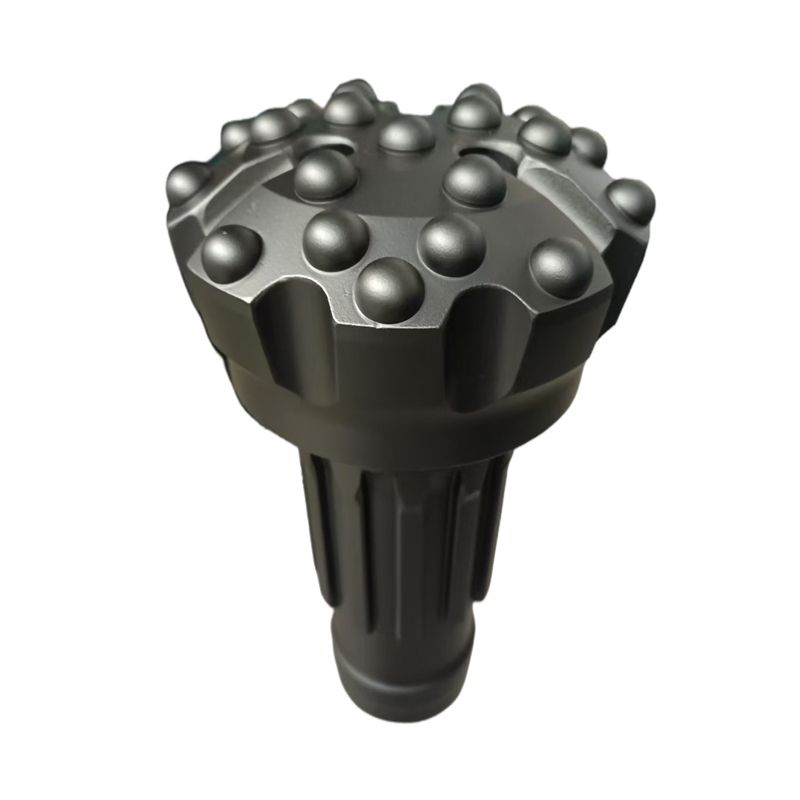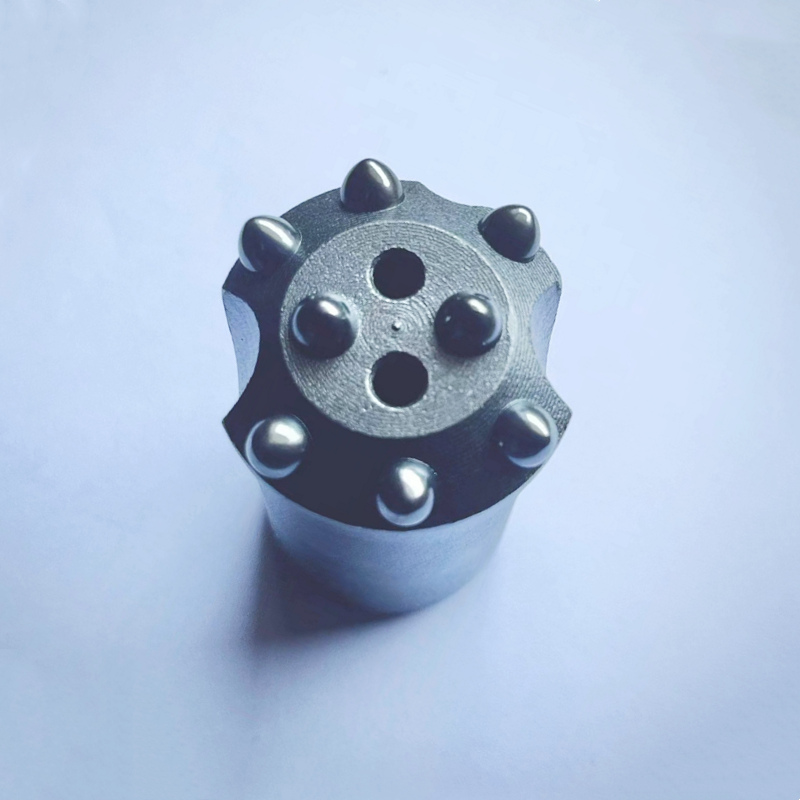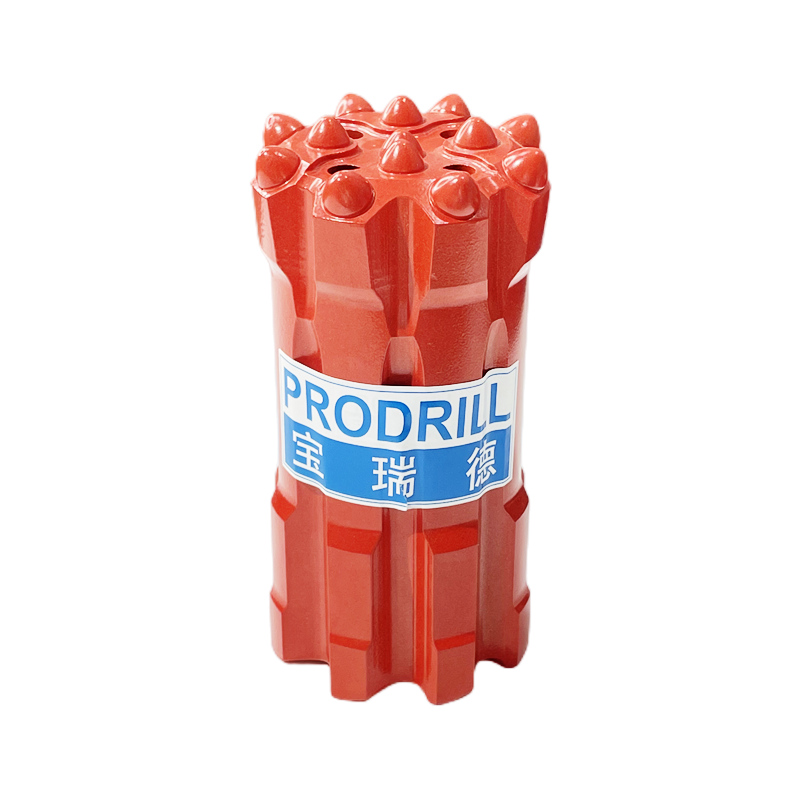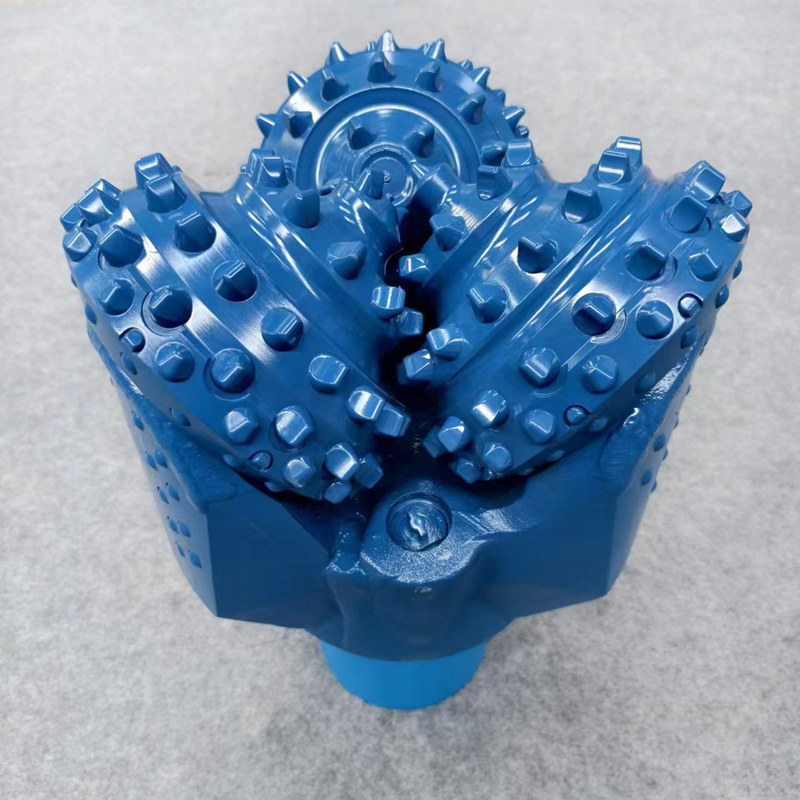Failure Analysis of Rock Drilling Tools
06 Feb 2025
My country's rock drilling tools have formed a series of products with their own characteristics, such as column tooth drill bits, carbide integral drill bits, drill bits for extremely tough rocks, K610 carbide, etc. Their quality and service life are constantly improving, but their performance is unstable. The main reasons for the early failure of drill bits should be analyzed from the drill bit and drill rod.
The damage forms of the drill bit mainly include abnormal wear and normal wear such as fragments, broken teeth, stripping, tooth loss, and fracture. The main failure cause of the straight drill bit is that the blade wing of the drill bit is too thin, not wear-resistant, radial wear is fast, the geometric shape stability is poor, the blade wing steel body has insufficient clamping force on the alloy sheet, which causes the sheet to fall off, the blasthole is not round, the rotation resistance is not large, and the wear of the drill blade is aggravated. The main damage forms of the ball tooth drill bit are stripping of the edge teeth, stripping of the broken teeth, cracking of the pants, removal of the cap and breaking of the waist. China University of Geosciences conducted a statistical analysis of the failure of domestic medium ∅40 and ∅42 column tooth drill bits when drilling hard granite with a 7655 pneumatic rock drill. The results showed that 22.7% of the teeth were stripped, 35.4% of the teeth were broken, and 26.4% of the teeth were stripped. Field tests showed that stripped and broken teeth were the main types of damage. This is because the eccentric stress on the teeth is extremely unevenly distributed, and the different radial pressures on the teeth cause the teeth to be subjected to poor stress conditions, resulting in broken teeth. As the impact on the column tooth drill bit increases, the plastic deformation of the tooth hole wall continues to increase, causing the tooth hole to have a bell mouth, resulting in a decrease in the tooth fixing force and stripping. In addition, due to the small interference between the tooth holes, the low hardness of the drill bit body also aggravates the stripping. The high hardness of the drill bit body has a much greater impact on the carbide teeth than the medium and low hardness of the drill bit body. In addition, it is related to factors such as welding, flux performance, welding operation, and usage methods. More than 80% of the fractures of the drill bit steel body occur at the boundary between the end face of the drill tip and the bottom of the drill trousers, and the fracture of the column tooth drill bit occurs along the bottom boundary of the tooth hole. And the fracture is often aggravated by factors such as improper steel selection, unreasonable geometric structure parameter design, inappropriate manufacturing process selection, and improper use methods.
Drill rods are subjected to comprehensive alternating stresses mainly composed of impact stress, bending stress, and corrosion stress during operation. Therefore, drill rods are required to have high fatigue strength, impact toughness, corrosion resistance, and low notch sensitivity and crack growth rate. The damage forms of drill rods include insufficient hardness of the handle end of the small drill rod causing top heaping: excessive hardness causing top explosion; wear of the connecting rod thread, and fatigue fracture and brittle fracture. Drill rod fracture is the main failure form. Fatigue fracture is caused by the accumulation of damage under repeated stress. It usually originates from the weak parts of the material, such as non-metallic inclusions, bubbles, white spots, scars, decarburization, and corrosion cracks inside the material: poor material and heat treatment, such as the core of the carburized fiber rod is too hard, the tail handle end is cracked and quenched due to poor quenching, and cracks and breakage are formed due to design reasons and poor fitting of the tail handle; Improper use such as hammer marks, poor lubrication of the joints, and cracks and breakage caused by corrosion of the drill steel. In the process of rock drilling in mines, a small number of broken drill rods have no fatigue marks on the fracture surface, which is generally in a bright crystal state, which is called brittle fracture. It is mainly due to defects in a certain part of the drill rod, such as inclusions, indentations, hammer marks or drastic changes in the cross section, and the bell mouth produced during forging, improper heat treatment, etc., which form low strength and poor plasticity of the drill rod or produce large stress concentration, so that the cracks develop very quickly, causing early brittle fracture of the drill rod.











